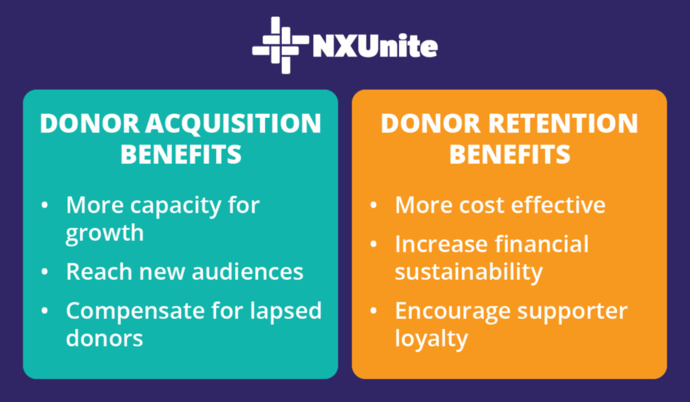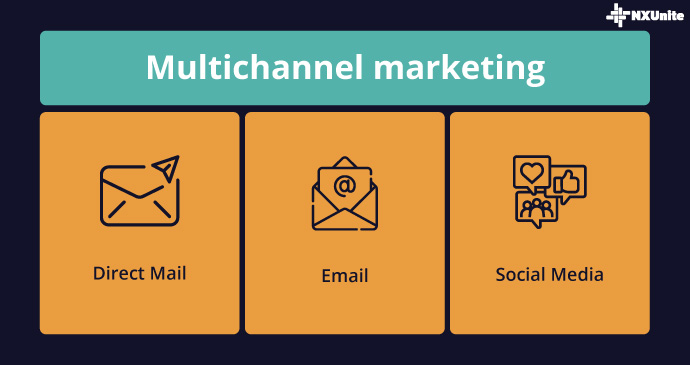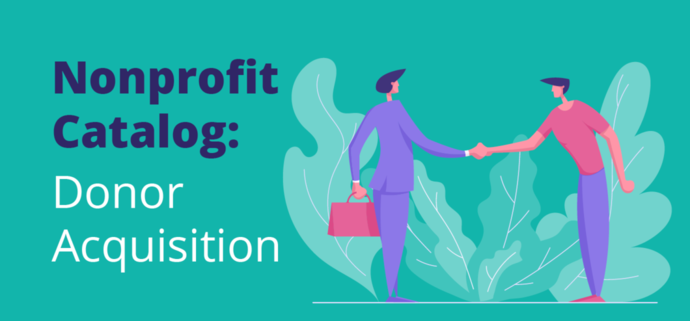Donor Acquisition – Nonprofit Catalog
As a nonprofit, you need donors to further your mission and help the communities that you serve. Along with stewarding your existing donors, your organization needs to continuously work to find new donors to support your cause.
Prioritize securing new donors throughout the year, not only during specific fundraising campaigns. Ongoing donor acquisition should be a key part of your marketing strategy, allowing you to continue to grow your support base as you foster existing relationships.
What is donor acquisition?
Donor acquisition is the process of acquiring new donors for your organization. Through direct mail, social media, and other outreach strategies, your nonprofit can connect with potential donors and earn their support.
Expanding your existing donor base increases your organization’s capacity to support its mission. Additionally, donor acquisition is essential to ensuring that your nonprofit is able to sustain itself when donors lapse. A lapsed donor is someone who previously donated to your organization but hasn’t for a set period of time.
Donor Acquisition vs. Donor Retention
A common misconception about nonprofit donor relations is that donor acquisition and retention are opposite and separate processes. According to eCardWidget, donor retention can be defined as “the strategies and efforts a nonprofit implements to encourage donors to continue their support over an extended period of time.” Once your organization has acquired a donor, the natural next step is to try to get them to engage with you again.
Although acquisition and retention are connected, many nonprofits wonder which one to prioritize. To help you answer this question for your organization, let’s look at some of the benefits of each process:

Benefits of Donor Acquisition
- Increasing your organization’s capacity for growth. If your nonprofit is planning any type of expansion, you’ll need new donors to boost your fundraising capabilities.
- Reaching new audiences. When you acquire a donor, you can tap into their networks to spread awareness of your mission to different segments of your community.
- Compensating for lapsed donors. No matter how much effort you put into donor retention, some of your supporters will inevitably stop participating in your organization’s activities. Acquiring new donors can help offset this lost support.
Benefits of Donor Retention
- Cost effectiveness. Retaining donors typically requires fewer resources and less time than acquiring new ones.
- Financial sustainability. When donors give on a regular basis, you can count on their contributions as a consistent revenue stream for your organization. This is especially true if supporters join your recurring giving program and set up automatic monthly or annual donations to your organization.
- Supporter loyalty. You’ll build deeper relationships with the donors you retain, allowing you to provide them with a better giving experience. Plus, you can encourage them to get involved with your organization in other ways, such as volunteering or attending fundraising events.
In summary, your nonprofit should prioritize donor acquisition if you’re planning for organizational growth or want to expand your reach in your community. However, focusing on donor retention day-to-day will provide more stability for your organization’s finances and supporter relationships.
Donor Acquisition Strategies
You can use a variety of different strategies to secure new donors to support your cause. The best donor acquisition plans involve using multiple strategies, all of which should be targeted to your organization’s specific audience. We’ll discuss three options here.

Multi-Channel Marketing
A multi-channel nonprofit marketing approach allows you to connect with multiple audiences that have different communication preferences by communicating with donors across several platforms. It also gives you a variety of touchpoints with supporters who engage with you across channels.
Market your nonprofit across a variety of communication channels, such as:
- Direct mail. Sending physical mail to supporters’ addresses often feels more personal to donors than email.
- Email. Comprehensive email marketing includes regular newsletters, campaign updates, fundraising appeals, and invitations to events and volunteering opportunities.
- Social media. Use social media to highlight successful examples of your nonprofit’s work, share volunteer stories, and interact directly with supporters.
Direct Mail Donor Acquisition
Direct mail remains an impactful way to reach donors, especially when combined with digital marketing techniques. Physical mail can offer a personalized touch to your donor communications and gives supporters a tangible representation of your nonprofit.
When using direct mail as a donor acquisition tool, include information about your nonprofit’s mission and explain how their support would directly further your organization’s goals. Direct mail outreach to potential donors might also encourage them to interact with your organization in another way, such as by visiting your website or following your social media accounts.
Google Ad Grants
Google Ad Grants are a powerful tool for nonprofits. Under the Google Ad Grant program, nonprofits are eligible for $10,000 in Google Adwords spending each month. This allows nonprofits to feature their marketing content at the top of the search engine results page, more easily reaching potential donors who search for terms related to their work.
Growing your supporter base through donor acquisition efforts is essential to ensuring your nonprofit is able to sustainably further your mission. If you’re unfamiliar with Google Ad Grants, there are agencies dedicated to helping nonprofits increase their reach through Google Ads.
Additional Resources
- Nonprofit Catalog – Read up on more nonprofit essentials by exploring our Nonprofit Catalog
- Nonprofit Analytics: Leveraging Data for Predictive Modeling – Learn how nonprofit analytics can help you create strategies for the future.
- 40+ Marketing Ideas for Nonprofits to Spread Your Mission – Check out these nonprofit marketing ideas for innovative ways to promote your organization.


